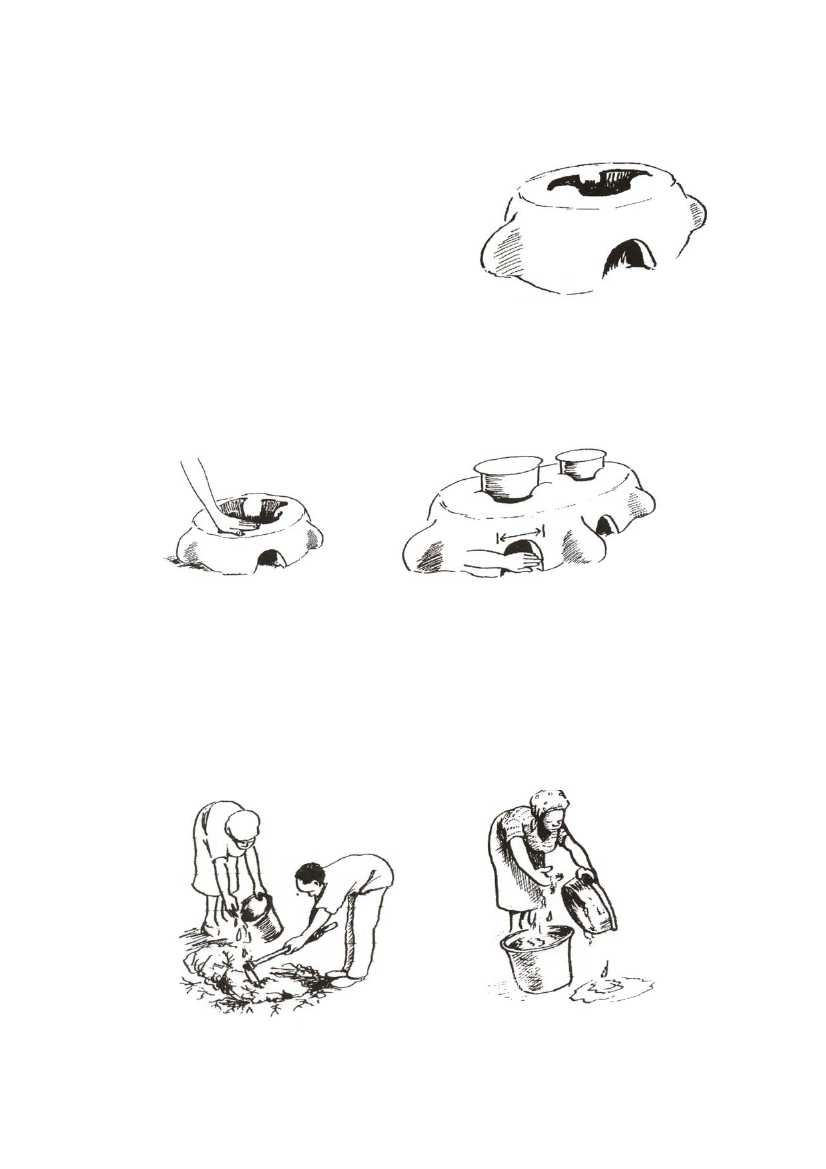
Kilakala Stove
This stove is promoted by the Christian Council of Tanzania – Women Training Centre – Morogoro
(CCT-Morogoro). It is built by surrounding three stones
with a mud wall and can be either a one-pot or two-0pot
stove.
Material required
Building soil (or any other soil with good binding qualities
such as clay), grass, sand, cow dung or ashes and water.
Mixing ratios
Three parts of building soil, to one part pounded grass. If
the soil is too soft add more to prevent cracking during the
Figure 5.55 A one-pot Kilakala stove
drying process. You could also add sand or small pieces of burnt bricks. If the soil is too sandy, mix
with cow dung or ashes.
Tools required
A hoe, panga, sufuria, three stones.
Dimensions
Figure 5.36 The wall thickness
Figure 5.57 The width of the door
The heights from the base 9of the stove to the pot rests should be equal to the height from the base of
the palm to the tip of the middle finger the thickness of the wall should be equal to the width of your
palm.
How to make the Kilakala stove
1. Mix the building soil, sand and grass with water. Do not use too much water as the mud
should be fairly stiff.
2. Store the mud under a shaded place and cover with banana leaves, wet sacks or polythene
sheeting, and leave for one week. Sprinkle with water occasionally to prevent the mud from
drying.
Figure 5.58 Mixing mud with water
20
Figure 5.59 Wetting the outside of the sufuria